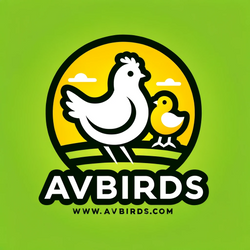When you bring home those fluffy new arrivals, having the right chick brooder supplies makes all the difference. You want your chicks warm, safe, and comfy as they grow. In this guide you’ll find must-have gear—from containers and heat sources to bedding, feeders, and essential accessories—so your brooder setup feels like home.
Prepare The Brooder Space
Choose A Brooder Container
First, pick a roomy, easy-to-clean enclosure. Plastic totes, dog playpens, or stock tanks all work. Aim for at least ½ square foot per chick in week one, then expand space as they grow.
Set Up Draft Guards
Chicks can’t regulate body heat until they’re about 3–6 weeks old. Use cardboard walls or a brooder cover to block drafts. That simple barrier keeps heat in and predators out.
Monitor Temperature Zones
You want a warm side around 95°F and a cooler side near 75°F so chicks can move to their comfort zone. Place a heat lamp or plate over one corner and scatter bedding to define the zones. Check temperatures with a thermometer at chick level.
Provide Adequate Heat Source
Pick A Heat Lamp Or Mat
Heat lamps deliver consistent warmth but pose fire hazards and can disrupt chicks’ sleep cycles (Snowdrop Farm). Heat mats or plates sit safe on the brooder floor, but may struggle in cool garages.
Try A Mother Box Alternative
Here’s the thing, a “Mother Box” mimics a hen’s warmth while conserving energy. Insulate a sturdy box, add a low-wattage heat mat, and let chicks regulate their body heat by moving in and out. It’s a clever, cost-effective hack for cold environments.
Select Suitable Bedding
Compare Bedding Materials
Not all substrates are created equal. Check this quick rundown:
| Bedding Type | Pros | Cons | Source |
|---|---|---|---|
| Aspen Shavings | Absorbent, even footing, non-toxic oils | More expensive than pine | The Critter Depot |
| Hemp | Soft, insulating, dust-free | Can be pricey | The Critter Depot |
| Sand | Clean dries quickly, affordable | Heavy, hard to sanitize | The Feather Brain |
| Shredded Paper | Lightweight, low dust, easy to replace | May mat when wet | The Feather Brain |
Maintain Bedding Cleanliness
- Spot-clean wet spots daily, and dump all bedding weekly.
- Mix in food-grade diatomaceous earth to keep droppings dry and control pests
- Avoid cedar or treated wood chips, which can harm respiratory systems
Install Feeders And Waterers
Types Of Chick Feeders
Efficient feeders cut waste and save you time (Raising Happy Chickens). Here’s how they stack up:
| Feeder Type | Pros | Cons |
|---|---|---|
| Long Plastic Trough | Small holes stop chicks climbing in | Can be pushed around by active chicks |
| Metal Trough | Durable, larger chicks can eat easily | Heavier, may rust if not coated |
| Mason Jar Feeder | Gravity-fed, reduces refills | Big holes spill grain into bedding |
| Hanging Feeder | Keeps feed off floor | Requires secure mounting |
Best Waterer Options
Clean, fresh water is nonnegotiable. Choose chick-size waterers or nipple drinkers to cut spills and contamination. Position them on a shallow platform so chicks can’t scratch bedding into their water. For more ideas, check our guide on chicken feeders and waterers.
Add Essential Accessories
Perches And Toys
Why add perches? They strengthen leg muscles and discourage boredom. A low stick or PVC pipe works great. Scatter a few pecking toys or hanging cabbage to stimulate curiosity.
Brooder Thermometer And Hygrometer
Humidity between 50–70% keeps ammonia low and lungs happy (The Poultry Site). Clip a thermometer/hygrometer at chick level. Accurate readings help you tweak ventilation or heat.
Follow Best Practices
Keep The Brooder Ventilated
Fresh air circulation prevents condensation and wet litter. Crack a corner open or install screened vents higher up. Good airflow keeps the brooder odor-free and chicks breathing easy.
Adjust Conditions As Chicks Grow
Lower brooder temperature by about 5°F each week until it reaches 75°F (Strong Animals). Watch chick behavior—huddling means they’re cold, while panting shows they’re too warm.
Clean Regularly
A weekly deep clean prevents bacterial buildup. Scrub feeders, waterers, and brooder walls with mild disinfectant. Rinse well and let everything dry before adding fresh bedding.
Key Takeaways
- Pick a sturdy container with draft guards and clear hot and cool zones
- Choose safe heat sources—consider mats or a DIY Mother Box instead of an open lamp
- Use absorbent, non-toxic bedding like aspen shavings or hemp
- Stock efficient feeders and waterers to cut waste and keep moisture down
- Add perches, toys, and a thermometer/hygrometer to monitor comfort
- Maintain good ventilation, adjust heat weekly, and clean thoroughly
Ready to set up the perfect brooder? If you haven’t ordered your chicks yet, explore our day-old chicks for sale to find your ideal flock. Have a favorite brooder hack? Share it in the comments below so everyone can benefit!
